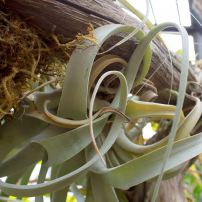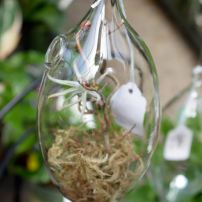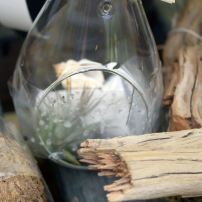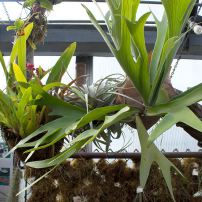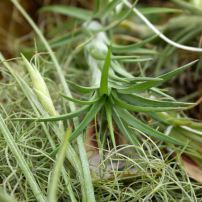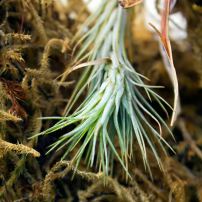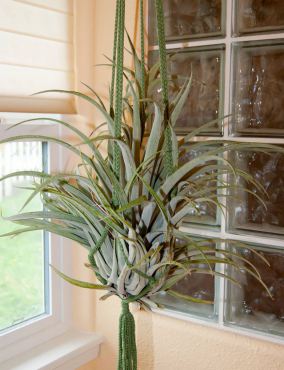 Tillandsias are pretty much a no-fail plant. They thrive on neglect, with a little shower of water now and then.
Tillandsias are pretty much a no-fail plant. They thrive on neglect, with a little shower of water now and then.
You’ll find more than 500 species of air plants (their common name). They are members of the Bromeliaceae family of plants. In their natural habitat, tillandsias are found in deserts, forests and mountains of Central and South America, the southern United States and in the West Indies. Sizes, colors and textures come in a wide variety. Some are as small as your little fingernail and others as large as your hand, sometimes even larger. Tillandsias thrive in colonies together or look quite strikingly stunning all alone.
They’ll reproduce by offshoots and by seeds from single stocks of flowers. Many tillandsias will change color at maturity (for example, from green to red). This signals the end of the plant’s life. At this stage, it will often send up a flower and make offshoots. Once a tillandsia has fruited, it will die. These offshoots are called daughter plants and are miniatures of the parent.
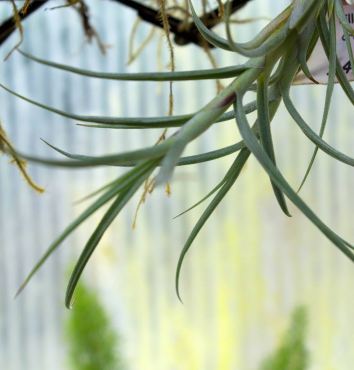 Tillandsias need no fertilizer but they do need a spritzing of water every few weeks. These easy-care plants survive on dust, decaying leaves and insect matter, most of which is way too small for human eyes to see.
Tillandsias need no fertilizer but they do need a spritzing of water every few weeks. These easy-care plants survive on dust, decaying leaves and insect matter, most of which is way too small for human eyes to see.
Their common name is air plant because they don’t need any soil or even a container to remain healthy. They’re the perfect plant for bathrooms and kitchens. You could even have a tillandsia in the cup holder of your car.
They’re not picky about heat, light or humidity requirements either. These appealing cuties are the perfect plant for many indoor gardeners.




